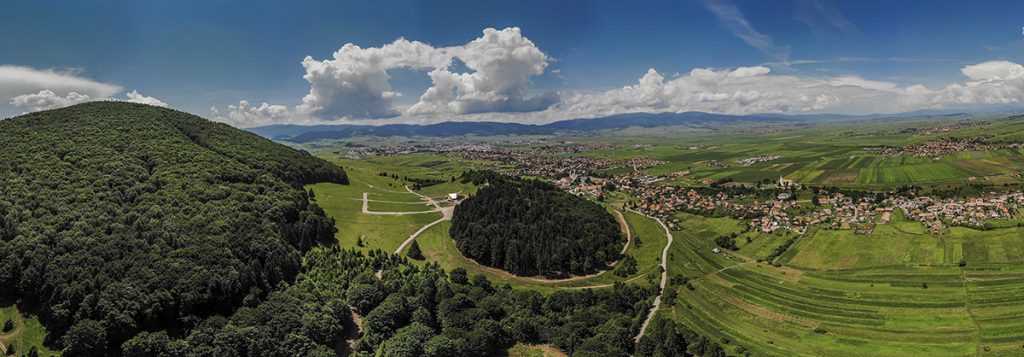Pope Francis celebrated Holy Mass earlier this year on June 1st at Csíksomlyó/Șumuleu Ciuc, site of a Marian pilgrimage that dates back to 1442. It was the first papal visit to the historic shrine and ahead of the celebration, at the express request of the Holy See, the local Franciscan friary built a temporary canopy over the open-air altar where the Holy Mass was to take place. Now the friary has decided that the canopy should, if possible, remain in place because it serves a useful purpose.
Erecting the canopy proved an unnecessary precaution for the occasion. On the day of the Holy Mass, temperatures barely topped 10 degrees Celsius, with fog and an almost constant drizzle that gave way only symbolically to a few rays of sunshine at the very time that Pope Francis celebrated the Mass.
Mihály Bőjte, head of the Franciscan community said they decided to ask for an extension of the canopy’s temporary, three-month permission and – if feasible – to make it permanent. The decision has generated controversy, with opponents saying that the canopy not only obscures the altar designed by famed Hungarian architect Imre Makovecz, but it also stick outs conspicuously from the surrounding, natural landscape.

Instead of listing the various pro and counter opinions, we asked our in-house photographer, István Vajk Szigeti – who works as an architect in his day job – to give his strictly professional opinion.
“The extension of an existing construction like this is not an easy task. It had to be designed, approved, constructed and put into use in record time. As such, I think the addition has remained within the limits of moderation. We do not know the whole set of circumstances, but with such a rush job the immediate demands can overwhelm the architectural design of one man trying to accommodate the various requirements.
“This canopy was not built to last, and in all likelihood, winter will damage it severely. Afterwards the support structure will also suffer damage, which will likely have to be assessed next year. A new plan will have to be made to make the structure permanent through reinforcing the support and making the canopy itself sturdier. I think Ernő Bogos (the architect who designed the canopy) will not accept the job that goes against his professional credo. Eventually someone with a lesser skill set will surely accept the job and deliver an inferior result, spoiling the view.”
Some have also expressed concern that it could negatively impact the ongoing application for designating Csíksomlyó as a UNESCO World Heritage site, an application that has been long delayed.
Title image: The so-called Triple Altar of Csíksomlyó (TransylvaniaNOW/István Vajk Szigeti)